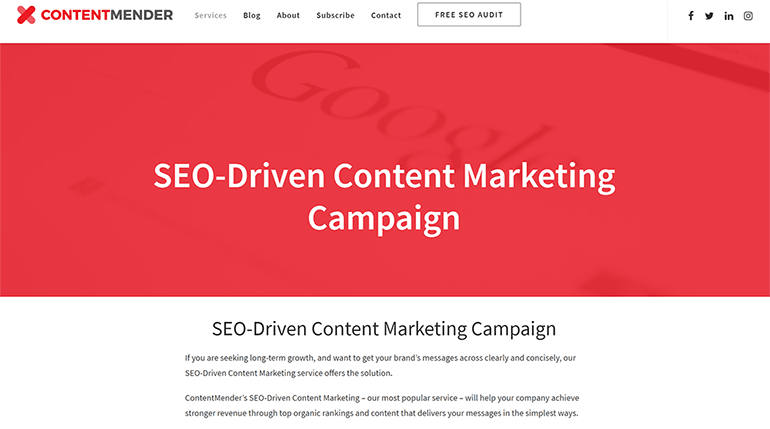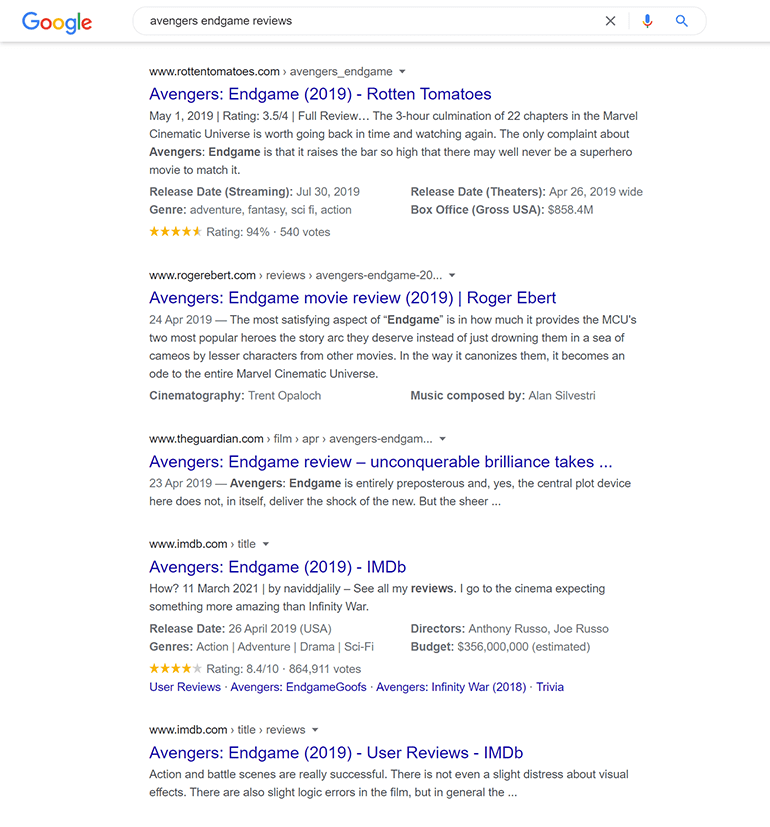
If you’re struggling to fill your monthly content calendar, you’re not alone. The quality vs quantity debate rages on, and research indicates that blog owners need to publish content at a high frequency in order to rank in the SERP (Search Engine Result Page). One survey from HubSpot noted that sites publishing more than 16 articles per month receive 3.5X more traffic than sites posting only 4 times per month.
But wait, the statistics caution: quantity over quality alone won’t do it. High-quality blog posts drive traffic.
Why Quality is so Important
 Search queries are competitive, so simply increasing frequency will not improve search position alone. Ron Lieback is the Founder of ContentMender, a content marketing agency and he's an expert in crafting & optimizing content for SEO. Ron is also the author of 365 to Vision: Modern Writer's Guide (How to Produce More Quality Writing in Less Time). When it comes to SEO, Ron says:
Search queries are competitive, so simply increasing frequency will not improve search position alone. Ron Lieback is the Founder of ContentMender, a content marketing agency and he's an expert in crafting & optimizing content for SEO. Ron is also the author of 365 to Vision: Modern Writer's Guide (How to Produce More Quality Writing in Less Time). When it comes to SEO, Ron says:
"Consistent and quality content is an absolute must."
Publishing repetitive content stuffed with backlinks (quantity over quality) is a big no-no for your SEO strategy and will only frustrate your readers. Low-quality posts decrease trust in your brand’s authority and rank poorly because no one will want to link to them.

Ron's agency, ContentMender, utilizes a Topic Clusters strategy to drive high-quality, high-frequency content for clients. They do this by creating a few "pillar" content pieces and expanding on them with other "cluster" articles that link to the main "pillar" piece.
For example, if they were creating a content strategy for a digital marketing agency that specializes in social media, they'd create a pillar piece that discusses the main benefits of social media and a few master tips on getting the most ROI out of it. Then they'd create cluster content around that which answers the most-searched questions, like "should I use a freelancer or take it in-house" or "Facebook, Instagram or LinkedIn? Which is Better" or "Mastering Snapchat for Ultimate ROI."
"When describing this 'Topic Cluster' strategy to clients, I discuss that the pillar is the main piece that is basically an overview with some tips for immediate action, followed by 'cluster' content that answers the who, what, when, where, why, and how of that particular subject."
With this strategy in mind, let's look at what's involved in crafting high-quality articles. There are 5 keys questions to answer:
- Who are you writing for?
- How long should your article be?
- How will you answer the search intent?
- How often will you publish?
- How will you make it shareable?
1. Who are you writing for?
This is a nuanced question because you should always write for people. Human audiences need to value your content but non-human audiences (ie: Google) need to value your content too.
Let's say you want to write an article reviewing the film Avengers: Endgame and your article is aimed at Marvel fans. If we look at the article title you'll probably want to go with something as clickbaity as possible because you want to attract people to read your article. So something like:
21 Epic Reasons You Won't Regret Sitting Through Marvel's 3-Hour Bum Numbing Infinity Saga Finale
Here's why this article title would work for human audiences and motivate them to click and read the article:
- It's a listicle (since it mentions '21 epic reasons') and we know people love listicles
- It's emotive (mentions 'regret' or lackthereof)
- It's humorous (equates a 3-hour film to 'bum numbing')
- It speaks to Marvel fans (since they know Avengers: Endgame as the penultimate film in the Infinity Saga series)
Here's why it likely won't rank on Google for searches of "avengers endgame reviews":
- Nowhere in the title does it actually mention "Avengers: Endgame"
It's as simple as that. The absence of the target keyword is a huge problem and it highlights the approach that needs to be taken if you want your article to rank well in Google. When searching for "avengers endgame reviews", every single result on the 1st page starts with the words "Avengers: Endgame".

So can you write for both? Sure you can. Just combine the target keyword with the same sense of emotive, click-worthy phrasing:
Avengers: Endgame - an honest film review by a Marvel fan for Marvel fans
Not only does this example have the keyword upfront (great for Google) but it also creates a unique point of difference against the other results (great for humans). By specifically calling out who wrote the review and who it's for, it's likely to be clicked on by Marvel fans than the other results.
In this simple example just looking at the article title, we can see how some tweaks made to the words you use can make a big impact on where you rank in the search results page.
2. How long should your article be?
About half the population admits to skimming written content online (but in reality, it's probably much higher). This makes writing difficult from the outset because humans aren't inclined to read unless they absolutely have to.
So what’s the best length for a blog post?
In this case, quality vs quantity means that you need to have high-quality blog posts that are the correct length for your topic and audience. The proper length is part of giving your readers what they came for. But bear in mind, if the keywords you're targeting are competitive, you'll need to outrank your competitors. To do this, you'll need a comprehensive, authoritative article that's objectively better than the competitors.
At the end of the day, a solid publishing strategy will likely include a mixture of different length articles. Short blog posts are great for filling in your content calendar with to-the-point, specific questions and time-sensitive news that grab your readers’ attention and can be skimmed in a couple of minutes.
Longer more comprehensive posts will likely rank higher in search results and drive more traffic to your page. These types of posts should be considered more 'evergreen' meaning they're considered to be more timeless.
Longer can be better
Generally speaking, longer blog posts perform better in search results.
- One study showed that content over 1,000 words long gets more shares and likes
- Long-form articles over 2,000 words can receive even more shares
- More social shares equals better SERP results
People tend to equate a longer answer with a more thorough one, so it makes sense that these longer blogs would receive better statistics when analyzed.
You hit a point of diminishing marginal returns though, so don’t get too long-winded:
- Posts longer than 4,000 words tend to lose the readers' interest and even cause frustration
- Entertainment posts generally perform better when short- 600 words or fewer is best
- Long posts only matter if they address a topic people are searching for. No interest = no readers.
This leads into the trickiest part of managing your content strategy regarding quality vs quantity – all of your posts need to be high quality, regardless of length.
You need to address the concerns of your target audience. It might be great that you know the best way for growing heirloom asparagus and can write 3,000 words on the topic, but if your readers are searching how to grow low-maintenance tomatoes, you’re out of luck.
The bottom line for quantity vs quality: while longer blog posts tend to do well in search results, you need to make sure they're targeted, informative, and answer the search intent if you want them to really drive traffic and convert for you.
3. How will you answer the search intent?
Longer isn’t automatically better. Rather, it’s the combination of both content quality and whether you’re actually meeting people’s needs (ie: addressing their search intent).
Google prioritizes content that best serves the reader, so high-quality content that closely matches the search queries of your potential readers will rank higher and is more likely to be shared. It just so happens that longer, authoritative, in-dpeth posts do this the best.
But what exactly is the search intent?
There are 4 primary types of search intents:
- Navigational: typing 'twitter' into Google instead of just going to twitter.com
- Informational: finding an answer to a question - searches starting with 'what is', 'how to', etc
- Transactional: performing a task or action - searches like 'buy coffee pods'
- Commercial: similar to transactional but higher up the funnel - searches like 'best iPhone cases'
Knowing the typical search intent on your target keywords will help you craft content that addresses the specific needs of your audience. The best way to gauge what the search intent is for your keywords is to perform the search on Google and look at the results! It might seem overly simplistic but Google has already done the hard work for you. By closely analyzing the top search results, you'll learn how best to address the search intent through Google's eyes.

TJ Haynes is the Head of Content & SEO @ Content Creators Agency and says:
"Google can't be tricked. Google SEO hates keyword cannibalism, i.e., creating 2 articles about the same exact topic. Google knows when your quickly-thrown-together article is short and won't actually answer readers' questions."
4. How often will you publish?
While quality is always going to be the priority, don’t drop the ball on frequency. After all, maybe you wrote the most perfect blog post of all time back in 2017, but it’s probably not going to help you long-term if you don’t keep producing content regularly.
For TJ and his team at Content Creators Agency, they aim for 4 articles per month.
"Weekly is definitely a good sign to Google that you're dedicated to bringing Google users the newest, most up-to-date information. However, 1-2 new articles a month would be fine if your budget can't handle 4/month, which is probably ideal in most situations."
Infrequent posting is also a problem. Tied into this is the importance of flexibility. None of us can predict what will happen in our industry or world. If you run an online knitting store and Lady Gaga suddenly takes up knitting – guess what? You should be blogging about that.
While having a content calendar and a planned-out strategy is important, don’t forget to respond to what’s happening in the real world to keep yourself current and relevant.
5. How will you make it shareable?
We know that a high-quality blog post is well-researched, answers a reader’s questions or meets their needs in some way, and is authoritative enough to keep both readers and search engines happy.
What does a quality social media post look like? If we feel swamped by blog content, that’s nothing compared to the avalanches of social media content published every day.
In 2020, Americans spent an average of 65 minutes a day on social media.
That’s a lot of time. And a lot of opportunity to connect with potential customers if you do it right.
Recent algorithm changes mean that Facebook and Instagram prioritize feel-good content that individuals can connect with emotionally. This isn’t the time or place for your treatise on how much you’ve struggled to create your business.
Best practices for social media look like:
- High-quality images – don’t just slap a stock image on your other content, put some thought into it.
- Personal connections – try to find images of real people interacting with your product
- Brevity – Keep it short and focused.
- Positive – people are more likely to interact with social media content that makes them feel good.
- Links – Always, include a link if it's relevant! The whole point of your social media strategy is to drive engagement with your brand, so don’t forget to add a properly shortened link to your content.
Even though social media does rely upon quantity to reach customers, a quality post meets the above criteria and doesn’t simply link out to your long-form blog posts unedited.
Managing Client Expectations
When working with clients on content production, you need to determine what's realistic based on the client's budget. This can vary dramatically, Ron from ContentMender works with local clients spending $1,000 per month on content all the way up to Enterprise clients spending upwards of $10,000 monthly including blog content, ghostwriting for CEO's and offsite content on LinkedIn and/or Medium.
Of course not all SEO content production involves writing articles from scratch, Ron and his team at ContentMender also work with clients to revamp old content every six months.
"We do this as part of our ongoing SEO campaigns, and it supercharges search rankings."
Final Thoughts
So, is it quantity over quality?
While it might be better to publish something rather than nothing each week, the best content strategy is going to offer high-quality posts that are optimized for your readers’ searches and fit the platform.
You can achieve this by:
- Answering the questions your readers have
- Writing well-researched content
- Knowing the purpose of each post
- Optimizing your social shares, not just automatically linking content
Each product in a line doesn’t have the exact same function and design, and each element in your content strategy shouldn’t either.
And as always, staying flexible and rolling with the punches keeps you adaptable and your content strategy constantly evolving.




